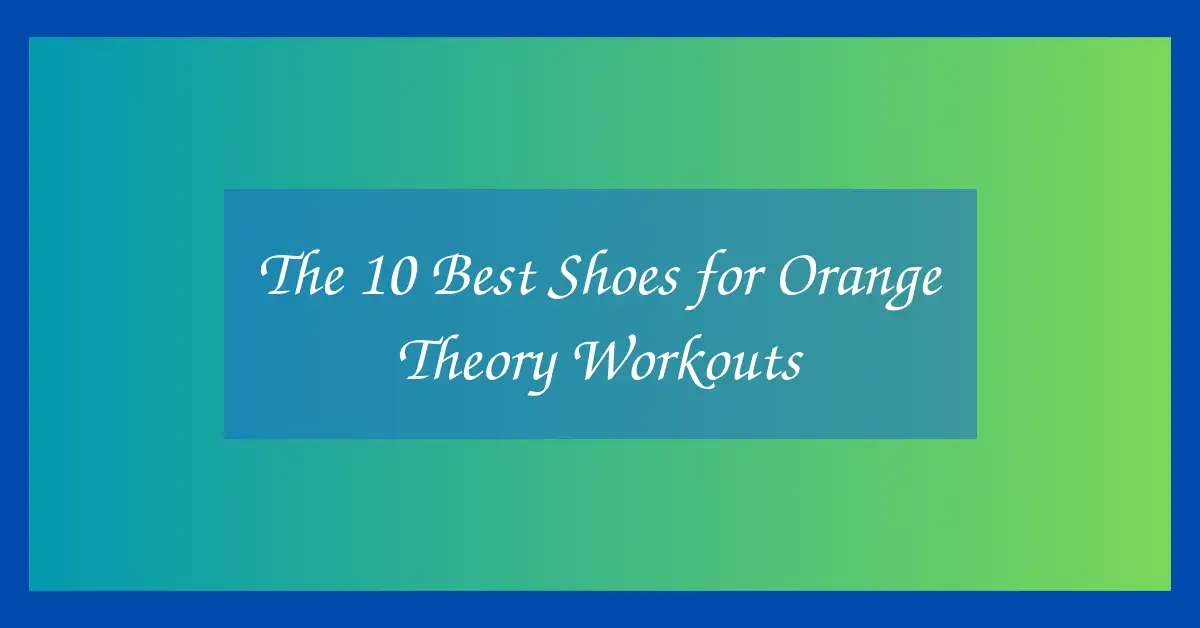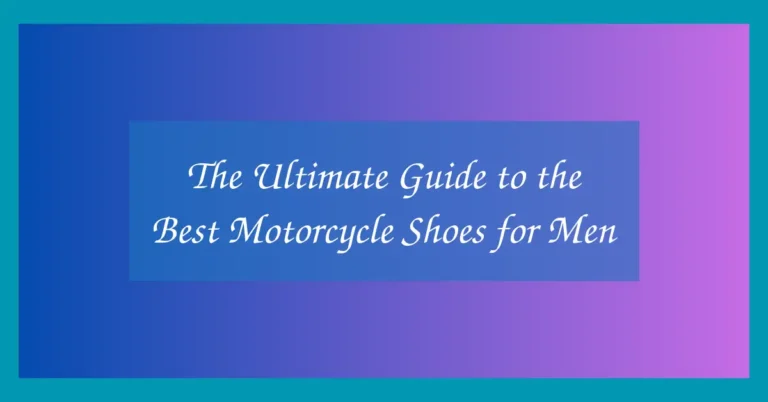The 10 Best Shoes for Orange Theory Workouts
Finding the best shoes for Orange Theory can be the difference between a smooth, energized workout and one filled with unnecessary strain. Because OTF combines treadmill intervals, rower work, and strength training, athletes need footwear that supports quick transitions, impact absorption, and lateral stability. The right pair will help you maintain form, reduce fatigue, and get the most from each workout.
Since Orange Theory blends cardio and functional movement, you need shoes that are responsive, flexible, and grippy. Many traditional running shoes fall short because they’re built mainly for forward motion, while overly stiff training shoes can hinder treadmill performance. The following reviews highlight shoes that excel in hybrid workouts, offering a mix of cushioning, stability, and durability.
Top 10 Best Shoes for Orange Theory Reviewed
1. Nike Metcon 9
The Nike Metcon 9 is a long-time favorite among hybrid athletes, offering a blend of stability and responsiveness suited for the shifting demands of Orange Theory. Its midsole balances firmness and cushioning, helping users handle treadmill sprints without losing ground feel. During strength circuits, the stable heel and broad base keep lifters grounded during squats and lunges.
The shoe’s outsole grips the floor well, offering confidence during lateral moves and quick directional changes. On the rowing machine, the structured upper helps keep the foot secure without uncomfortable pressure points. It’s a solid all-around performer for OTF members seeking durability and underfoot stability.
The breathability of the upper also stands out, allowing airflow during high-intensity sessions. Even as the interval blocks intensify, the shoe maintains its supportive feel without breaking down quickly. Overall, it’s built for athletes who want both structure and slight bounce.
While the Metcon 9 is known for its tough construction, it remains surprisingly comfortable for mixed training. It excels in circuits and floor work while still offering enough responsiveness for treadmill transitions. This makes it a dependable pick for consistent OTF sessions.
Pros
- Exceptional stability for lifting blocks
- Secure upper for lateral movements
- Durable and supportive design
Cons
- Firmer ride on the treadmill
- May feel heavy for long runs
2. HOKA Clifton 9
The HOKA Clifton 9 is an excellent option for OTF students who prioritize treadmill comfort and cushioning. Its thick, lightweight midsole softens each stride, especially during longer running intervals. The rocker shape also encourages smooth transitions, helping users maintain cadence and efficiency.
Though primarily a running shoe, it performs better than expected during floor exercises thanks to its balanced platform. Its stability is moderate, but the broad sole prevents excessive wobbling during basic strength moves. For rower usage, the heel cushioning reduces pressure during extended rowing blocks.
The upper is soft, breathable, and accommodating, making it comfortable even during longer classes. It supports a wide range of foot shapes without restricting movement. The shoe’s lightweight feel helps reduce fatigue during repeated treadmill intervals.
For Orange Theory members who spend more time on the treadmill than on heavy strength blocks, the Clifton 9 is a standout choice. Its plush ride can help reduce joint fatigue during higher-impact days. Overall, it’s ideal for cardio-focused athletes wanting maximum comfort.
Pros
- Highly cushioned for treadmill running
- Lightweight and breathable
- Smooth, efficient stride transitions
Cons
- Less stable for heavy lifting
- Bulkier midsole reduces ground feel
3. Reebok Nano X3
The Reebok Nano X3 is engineered for hybrid workouts, making it a strong match for OTF’s balanced program. Its Lift and Run Chassis offers a unique blend of cushioning and rigidity, giving the shoe versatility across treadmill and floor work. The nano upper provides supportive structure while still remaining flexible enough for natural foot movement.
During treadmill intervals, the Nano X3 offers more comfort than traditional cross-trainers thanks to its responsive yet firm midsole. It helps runners stay agile while still delivering enough stability when transitioning into strength blocks. For rowing, the structured heel keeps the foot planted securely without slipping.
The shoe’s wide toe box benefits athletes who need extra room for toe splay. This helps with balance during squats and lunges. The traction is also reliable, offering grip on multiple studio surfaces.
Its durability is one of its strongest features, making it ideal for athletes who attend OTF frequently. Whether lifting, sprinting, or rowing, the Nano X3 keeps performance balanced across all segments. It’s a dependable choice for those wanting an all-in-one training shoe.
Pros
- Excellent balance of stability and cushioning
- Wide toe box enhances comfort
- Durable build for frequent training
Cons
- Firm underfoot feel for long treadmill runs
- Can feel stiff during break-in
4. Brooks Ghost 15
The Brooks Ghost 15 is a highly cushioned running shoe perfect for Orange Theory members who prioritize comfort on the treadmill. Its DNA Loft v2 cushioning provides a smooth and soft underfoot feel that works well for longer intervals and endurance blocks. The neutral support makes it adaptable to different running styles.
While it excels in running segments, the shoe remains functional on the floor thanks to its balanced midsole. Though not as stable as a dedicated cross-trainer, its structure is sufficient for moderate strength work. The upper is plush yet breathable, giving a secure fit without excessive tightness.
The Ghost 15 transitions smoothly between running and rowing. Its cushioned heel supports rowers who feel pressure during extended rowing blocks. Meanwhile, the outsole provides reliable traction across OTF surfaces.
For members who spend the majority of their class time on the treadmill, the Ghost 15 provides a comfortable and consistent ride. It’s especially beneficial for those who experience joint fatigue during high-impact training. Overall, the Ghost 15 is a soft, supportive option for cardio-heavy days.
Pros
- Exceptional cushioning for running
- Breathable and comfortable upper
- Smooth heel-to-toe transitions
Cons
- Not ideal for heavy floor lifting
- Less lateral stability
5. On Cloud X 3
The On Cloud X 3 is tailored for mixed training, offering a lightweight and responsive feel that suits Orange Theory’s fast-paced environment. Its CloudTec cushioning provides a bouncy yet controlled underfoot experience, helping athletes move fluidly during all three OTF blocks. The shoe remains stable despite its low weight, which is a major advantage during transitions.
The engineered mesh upper offers excellent breathability while maintaining a snug, performance-oriented fit. This helps keep the foot secure during treadmill sprints and multidirectional floor exercises. The Speedboard plate adds stiffness, contributing to smoother and more powerful stride transitions.
During rowing segments, the low-profile design helps the foot stay close to the platform. This enhances efficiency and reduces the feeling of bulk around the heel. Meanwhile, the outsole provides just enough grip for lateral moves without feeling overly sticky.
For users wanting a shoe that feels fast, airy, and versatile, the Cloud X 3 is one of the top choices on the market. It’s ideal for those who dislike heavy footwear and prefer a more natural yet energetic ride. Overall, it’s a strong fit for athletes who prioritize speed and agility during their classes.
Pros
- Lightweight and highly responsive
- Excellent breathability
- Stable enough for hybrid training
Cons
- Less cushioning for long runs
- Narrower fit for wide feet
6. Nike Air Zoom SuperRep 4
The Nike Air Zoom SuperRep 4 is built specifically for high-intensity interval training, making it a strong match for the fast-paced structure of Orange Theory. The dual Zoom Air units in the forefoot offer explosive energy return, helping athletes push through treadmill sprints and jumping movements. Its wide arc design also supports side-to-side motions common in floor exercises.
The shoe’s split-sole construction improves flexibility during dynamic movements, allowing the foot to bend naturally. Meanwhile, the cushioning under the heel helps soften impact when transitioning into treadmill intervals. This makes it a great pick for members who appreciate a cushioned yet springy ride.
The upper is breathable and supportive without feeling restrictive. Its internal sleeve design helps secure the midfoot, preventing slippage during fast-paced agility drills. For rowing, the midsole cushioning feels comfortable and supportive during repeated strokes.
The SuperRep 4 is ideal for athletes who love energetic, bouncy shoes that enhance power and movement efficiency. Its futuristic construction stands out in both design and performance. Overall, it’s a go-to option for members seeking maximum propulsion during their classes.
Pros
- Explosive forefoot cushioning
- Flexible split-sole design
- Secure midfoot support
Cons
- Can feel bulky during lifts
- High platform may feel unstable to beginners
7. Adidas Adipower 5
The Adidas Adipower 5 is designed for athletes who take strength training seriously during Orange Theory workouts. It offers a supportive, stable platform that keeps the foot grounded during heavy squats, lunges, and bodyweight work. The firm midsole enhances power transfer, making strength movements more efficient.
Though more stability-oriented, the shoe still performs decently during short treadmill intervals thanks to its secure fit. It’s not as cushioned as running shoes, but it offers enough flexibility for quick transitions. Its structure is especially beneficial for users who feel unstable in softer shoes.
The upper is durable and provides a locked-down feel. During floor exercises requiring precision, the Adipower 5 helps maintain consistent form and alignment. For rowing, the flat sole keeps the foot positioned evenly through each stroke.
This shoe is ideal for OTF members who focus heavily on strength segments and prefer a firm platform. It’s not the lightest or softest shoe, but it excels where stability matters most. Overall, it’s aimed at athletes who value support and rigidity for their lifts.
Pros
- Excellent stability for strength training
- Durable upper construction
- Great platform for controlled movements
Cons
- Not ideal for long treadmill intervals
- Firmer ride may feel rigid to some users
8. New Balance Fresh Foam X 880 v13
The New Balance Fresh Foam X 880 v13 is built for comfort and cushioning, making it great for OTF users who spend more time on the treadmill. Its Fresh Foam midsole offers a soft yet controlled ride, reducing impact during long running blocks. The neutral support suits a wide range of foot types.
Despite being a running shoe, it handles floor work better than expected due to its balanced midsole and supportive upper. It provides enough structure for moderate strength movements without compromising comfort. For rowing, the heel cushioning offers noticeable relief during repetitive motion.
The engineered mesh upper enhances breathability and provides a gentle, secure fit. The shoe’s smooth transitions and responsive feel help athletes maintain consistent pacing during treadmill workouts. Stability is moderate but sufficient for most users.
This shoe is ideal for Orange Theory members who want a plush, versatile runner that also performs reasonably well during mixed training. It’s dependable, comfortable, and supportive for cardio-heavy sessions. The Fresh Foam cushioning is a standout feature for users with impact sensitivity.
Pros
- Soft and supportive cushioning
- Breathable engineered mesh
- Comfortable for longer treadmill blocks
Cons
- Less stable for heavy strength work
- Not ideal for aggressive lateral movements
9. Under Armour TriBase Reign 5
The Under Armour TriBase Reign 5 is built for stability and ground connection, making it excellent for OTF’s strength and floor segments. The TriBase outsole design enhances grip and allows natural foot flexion while maintaining a steady platform. Its low-profile construction benefits users who prefer a closer-to-the-ground feel.
While not as cushioned as a running shoe, it still performs decently on the treadmill for short to moderate intervals. The midsole provides responsiveness without excessive softness, helping athletes remain agile during transitions. For rowing, the flat heel provides consistent support during prolonged effort.
The upper feels supportive and durable, offering a snug fit ideal for explosive and lateral movements. Whether performing jump squats, planks, or lunges, the Reign 5 provides confidence and control. Traction is also reliable across varied studio surfaces.
This shoe is ideal for users who value stability and precision during strength-focused classes. It’s especially well-suited for athletes who prefer a firmer, more minimal shoe. Overall, it’s a strong performer for floor and circuit training.
Pros
- Excellent floor stability
- Durable, supportive upper
- Reliable traction for agility work
Cons
- Not ideal for long treadmill intervals
- Firm underfoot feel
10. Saucony Ride 17
The Saucony Ride 17 is a versatile running shoe with a responsive, cushioned midsole that makes treadmill work comfortable and efficient. Its balanced PWRRUN+ cushioning provides softness without sacrificing responsiveness, helping users maintain stability during longer running intervals. The shoe adapts well to different running styles.
The Ride 17 also performs reliably during moderate floor work thanks to its supportive upper and stable platform. While not as rigid as a cross-trainer, it offers enough side-to-side security for basic strength blocks. For rowing, the heel padding ensures comfort during repetitive movements.
The breathable upper design keeps the foot cool even during intense OTF sessions. Its smooth transitions and comfortable interior make it suitable for back-to-back training days. Traction is dependable, especially on studio floors.
This shoe is ideal for Orange Theory members who want a reliable treadmill performer that still works well during mixed training. It’s comfortable, responsive, and versatile for all three blocks of OTF. Overall, the Ride 17 is a great option for those seeking a balanced ride.
Pros
- Responsive yet cushioned midsole
- Breathable and lightweight upper
- Versatile across all OTF segments
Cons
- Less stable for heavy lifting
- Not ideal for intense lateral movement
| Product Name | Best For | Key Feature | Fit Type | Training Strength |
|---|---|---|---|---|
| Nike Metcon 9 | Hybrid Training | Stable heel platform | Snug | Strength stability |
| HOKA Clifton 9 | Treadmill Comfort | Soft, plush cushioning | Roomy | Running comfort |
| Reebok Nano X3 | All-Around OTF | Lift and Run chassis | Wide forefoot | Balanced performance |
| Brooks Ghost 15 | Long Running Intervals | Cushioned neutral ride | Soft fit | Running endurance |
| On Cloud X 3 | Agility & Speed | CloudTec responsiveness | Snug | Agility work |
| Nike Air Zoom SuperRep 4 | HIIT Explosiveness | Dual Zoom Air units | Secure midfoot | High-energy movements |
| Adidas Adipower 5 | Strength-Focused Sessions | Firm lifting platform | Structured | Heavy lifts |
| New Balance 880 v13 | Comfort Running | Fresh Foam cushioning | Adaptive | Long treadmill work |
| Under Armour TriBase Reign 5 | Stability & Floor Work | TriBase outsole | Snug, secure | Strength & agility |
| Saucony Ride 17 | Balanced Hybrid Training | PWRRUN+ midsole | Comfort fit | Versatile performance |
Best Shoes for Orange Theory: Buying Guide
Know Your Training Style
Before picking a shoe for Orange Theory, consider whether you lean more toward treadmill work, rowing, or strength training. Some shoes excel at impact absorption for running, while others provide the stiffness needed for controlled lifts. Understanding how you train ensures you choose footwear that enhances performance rather than limiting it.
Stability vs. Cushioning
OTF is unique because it blends high-impact running with strength training, so your shoe must balance cushioning and stability. Plush running shoes feel great on the treadmill but may feel unstable during lateral moves. Meanwhile, cross-trainers prioritize stability but may feel firm during long runs. Choose a model that matches your preferred emphasis.
Heel-to-Toe Drop
The drop affects your running mechanics and lifting posture. Shoes with a moderate drop are often the most versatile for Orange Theory, as they help with both smooth running and grounded lifting positions. Low-drop shoes increase stability on floor segments but may feel flat on treadmill intervals.
Upper Fit and Security
A snug upper ensures your foot stays in place during multi-directional movements. Look for breathable mesh that locks the midfoot without causing pressure on the toes. A secure fit boosts confidence during sprints, rows, and functional strength exercises.
Outsole Grip
A good outsole should provide enough traction for rowing platforms, treadmill belts, and floor exercises. Shoes with multi-directional treads are often the best choice for OTF. This helps prevent slipping during fast-paced agility drills and keeps movements smooth.
Durability for Frequent Classes
Orange Theory workouts can be intense, especially for members attending multiple times per week. Choose shoes made with durable materials that withstand repeated impact and lateral stress. Reinforced uppers and hardy outsoles can prolong the lifespan of your footwear.
FAQ
Should I wear running shoes or cross-trainers for Orange Theory?
It depends on your focus during class. If you spend more time on the treadmill, running shoes offer better cushioning and impact protection. If you prioritize floor and strength segments, cross-trainers provide better lateral support and stability. Many OTF members choose hybrid shoes that offer a balanced mix of both.
How often should I replace my Orange Theory shoes?
Most athletes benefit from replacing their shoes every 4–6 months if attending classes regularly. High-intensity intervals break down cushioning and upper support faster than casual workouts. Keep an eye on midsole compression, outsole wear, and fit changes to know when it’s time for a new pair.
Are minimalist shoes good for Orange Theory?
Minimalist shoes can work for strength and agility segments but are usually not ideal for treadmill intervals. The reduced cushioning may lead to impact fatigue for many users. Most athletes benefit from moderate cushioning paired with stable construction.
Can one pair of shoes handle all three OTF blocks?
Yes, many shoes are designed to handle treadmill running, rowing, and strength intervals. Hybrid trainers tend to be the most versatile, offering a blend of responsiveness and stability. However, if you have very specific training needs, you may prefer one type over another.
Should I size up for Orange Theory shoes?
Running and training shoes typically need a thumb’s width of space at the toe for swelling during workouts. If your current shoes feel tight during treadmill intervals, you may benefit from sizing up half a size. Always check the brand’s fit guide for best results.
Are rowing-friendly shoes different from running shoes?
Rowing doesn’t require deep cushioning, but it does benefit from a secure heel and stable platform. Many running shoes still work well, provided they aren’t overly soft or unstable. Shoes with moderate cushioning and good heel security are the best match.
Verdict
The best shoes for Orange Theory are those that match your personal training style, offering the right balance of cushioning, stability, and responsiveness. Whether you prioritize running, strength, or all-around performance, choosing footwear aligned with your needs can enhance comfort and efficiency. With the right pair, every OTF class feels smoother, more supportive, and more enjoyable.







